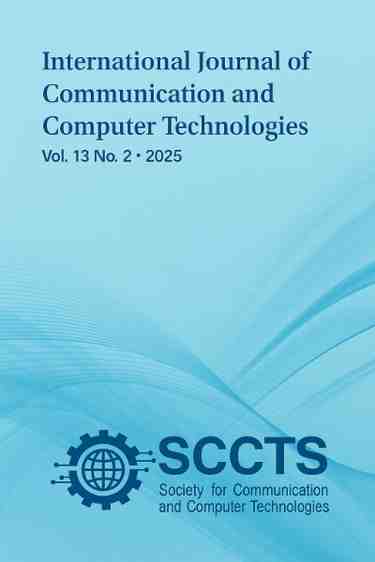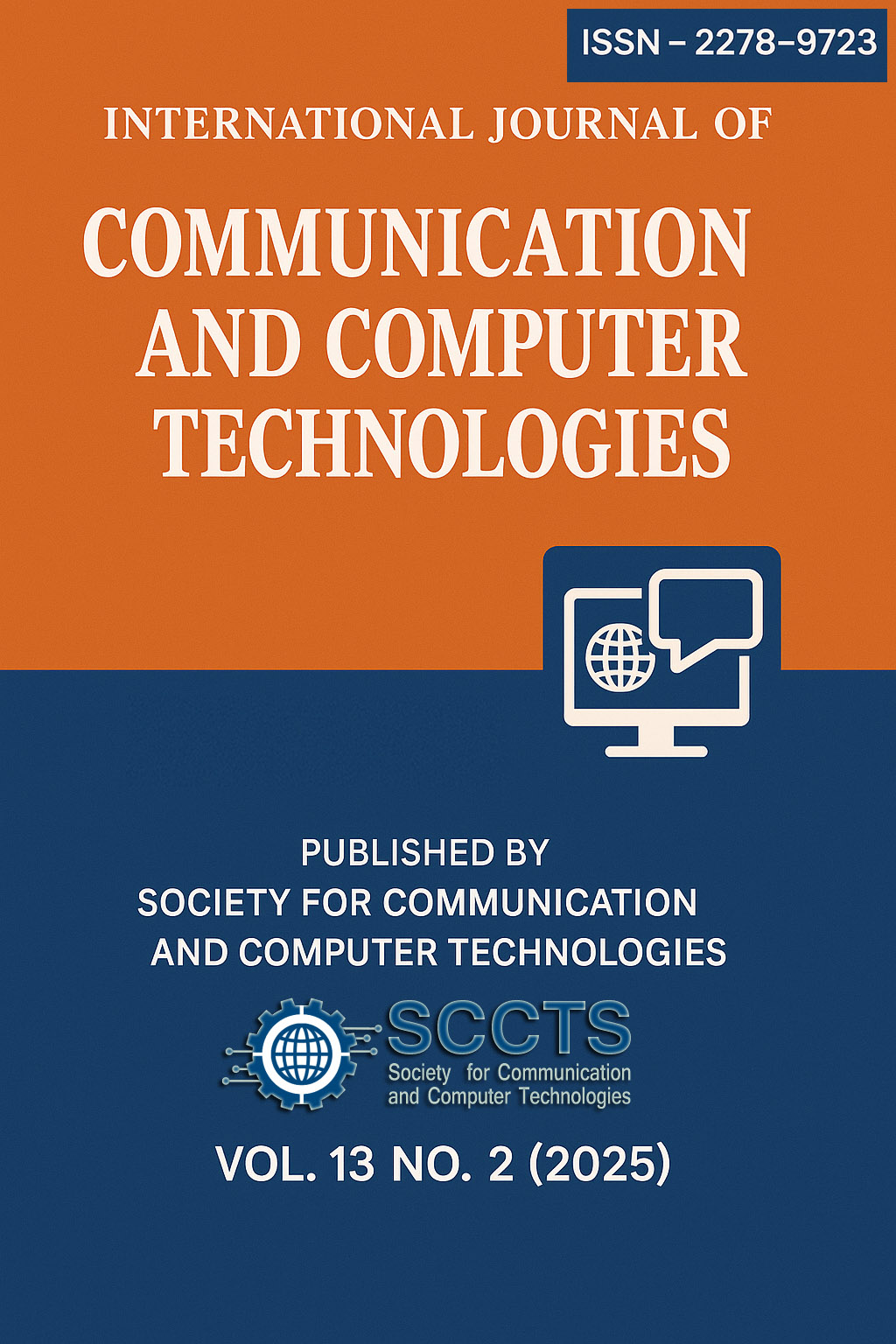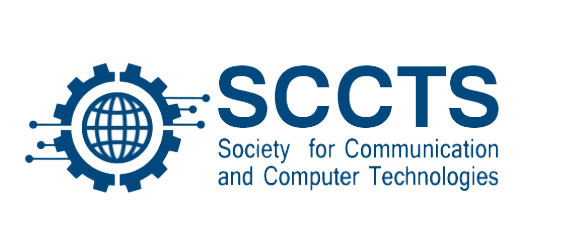Protecting Distributed Ledgers from Advanced Persistent Threats Using SVM-Based Blockchain Security
DOI:
https://doi.org/10.31838/IJCCTS.13.02.02Keywords:
cyber-attacks, Machine learning, detection, identification, mitigation, cyber-attacks, distributed file systemAbstract
This work focuses on multi-dimensional approach to incorporate the Support Vector Machine (SVM) models with Blockchain to secure distributed ledger against APTs. The classifying and high pattern recognition ability of SVM makes the proposed framework easily capture and neutralize malicious activities in the blockchain networks in realtime. The distribution of the blockchain technology and use of machine learning for predictive modeling guarantees a hard-coded countermeasure against new forms of cyber threats. As such, this work is centered on how these technologies can be integrated in harmony: attempting to enhance the accuracy of threat identification without compromising the functionality of the blockchain. This implementation shows the possibility of achieving strong, secure and scalable applications in different applications domains, and so make a way forward for upcoming decentralized cybersecurity solutions.
References
Pandey, A. K., Saxena, R., Awasthi, A., & Sunil, M. P. (2023). Privacy preserved data sharing using blockchain and support vector machine for industrial IOT applications. Measurement: Sensors, 29, 100891.
KHAN, M. Z., BANERJEE, A., & DALAPATI, G. K. Cipher Block Chaining Support Vector Machine for Secured Decentralized Cloud Enabled Intelligent IoT Architecture.
Chen, Y. C., Hsu, S. Y., Xie, X., Kumari, S., Kumar, S., Rodrigues, J., & Alzahrani, B. A. (2024). Privacy preserving support vector machine based on federated learning for distributed IoT‐enabled data analysis. Computational Intelligence, 40(2), e12636.
Singh, K. D. (2021, December). Particle swarm optimization assisted support vector machine based diagnostic system for dengue prediction at the early stage. In 2021 3rd International Conference on Advances in Computing, Communication Control and Networking (ICAC3N) (pp. 844-848). IEEE.
Jin, T., Liang, F., Dong, X., & Cao, X. (2023). Research on land resource management integrated with support vector machine—Based on the perspective of green innovation. Resources Policy, 86, 104180.
Geetha, C., Johnson, S. D., Oliver, A. S., & Lekha, D. (2024). Adaptive weighted kernel support vector machine-based circle search approach for intrusion detection in IoT environments. Signal, Image and Video Processing, 18(5), 4479-4490.
Jagadeesan, J., & Kirupanithi, D. N. (2023). An optimized ensemble support vector machine-based extreme learning model for real-time big data analytics and disaster prediction. Cognitive Computation, 15(6), 2152-2174.
Al-Naeem, M., Hafizur Rahman, M. M., Banerjee, A., & Sufian, A. (2023). Support vector machine-based energy efficient management of UAV locations for aerial monitoring of crops over large agriculture lands. Sustainability, 15(8), 6421.
Li, J., Li, Y., Song, J., Zhang, J., & Zhang, S. (2024). Quantum support vector machine for classifying noisy data. IEEE Transactions on Computers.
Rajasekaran, G., Velavan, P., & Vaidianathan, B. (2024). Least-Squares Support Vector Machine-Based Cancer Prediction System. International Journal of Integrative and Modern Medicine, 2(5), 307-317.
Karami, A., & Niaki, S. T. A. (2024). An Online Support Vector Machine Algorithm for Dynamic Social Network Monitoring. Neural Networks, 171, 497-511.
Ma, C., Qin, S., Hu, J., & Yan, L. (2021, June). Subway Flow Prediction Based on Improved Support Vector Machine. In 2021 8th IEEE International Conference on Cyber Security and Cloud Computing (CSCloud)/2021 7th IEEE International Conference on Edge Computing and Scalable Cloud (EdgeCom) (pp. 115-120). IEEE.
Arshid, K., Jianbiao, Z., Hussain, I., Lema, G. G., Yaqub, M., & Munir, R. (2024). Support vector machine approach of malicious user identification in cognitive radio networks. Wireless Networks, 30(6), 4761-4772.
Navia-Vázquez, A., Díaz-Morales, R., & Fernández-Díaz, M. (2022). Budget distributed support vector machine for non-id federated learning scenarios. ACM Transactions on Intelligent Systems and Technology (TIST), 13(6), 1-25.
Hurst, W., Tekinerdogan, B., Alskaif, T., Boddy, A., & Shone, N. (2022). Securing electronic health records against insider-threats: A supervised machine learning approach. Smart Health, 26, 100354.
Chander, B. (2022). Artificial Neural Networks and Support Vector Machine for IoT. Artificial Intelligence-based Internet of Things Systems, 77-103.
Anitha, P., & Srimathi, C. (2021). Blockchain based Lebesgue interpolated Gaussian secured information sharing for pharma supply chain. International Journal of Intelligent Networks, 2, 204-213.
Xiaoqun, L., & Run, L. (2022, May). An improved K-means clustering model based on support vector machine for health insurance cost prediction. In 2022 IEEE 2nd International Conference on Electronic Technology, Communication and Information (ICETCI) (pp. 521-525). IEEE.
Tang, W. (2024). Application of support vector machine system introducing multiple submodels in data mining. Systems and Soft Computing, 6, 200096.
Bahnam, B. S., & Abd Dawwod, S. (2022). A proposed model for diabetes mellitus classification using coyote optimization algorithm and least squares support vector machine. Int J Artif Intell ISSN, 2252(8938), 1165.
Downloads
Published
How to Cite
Issue
Section
License
Copyright (c) 2025 International Journal of communication and computer Technologies

This work is licensed under a Creative Commons Attribution-NonCommercial-ShareAlike 4.0 International License.









 The articles in Worldwide Medicine are open access articles licensed under the terms of the
The articles in Worldwide Medicine are open access articles licensed under the terms of the 